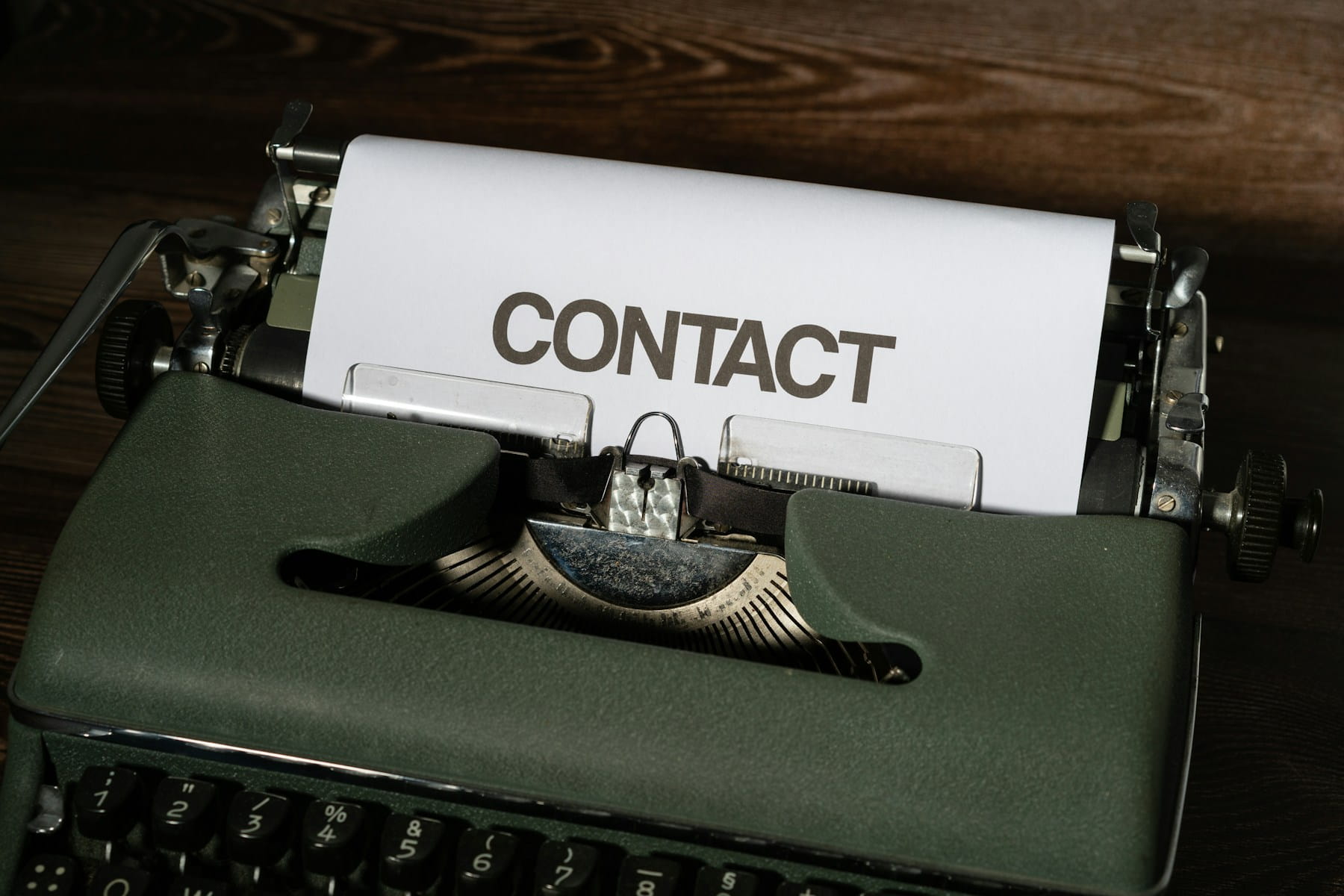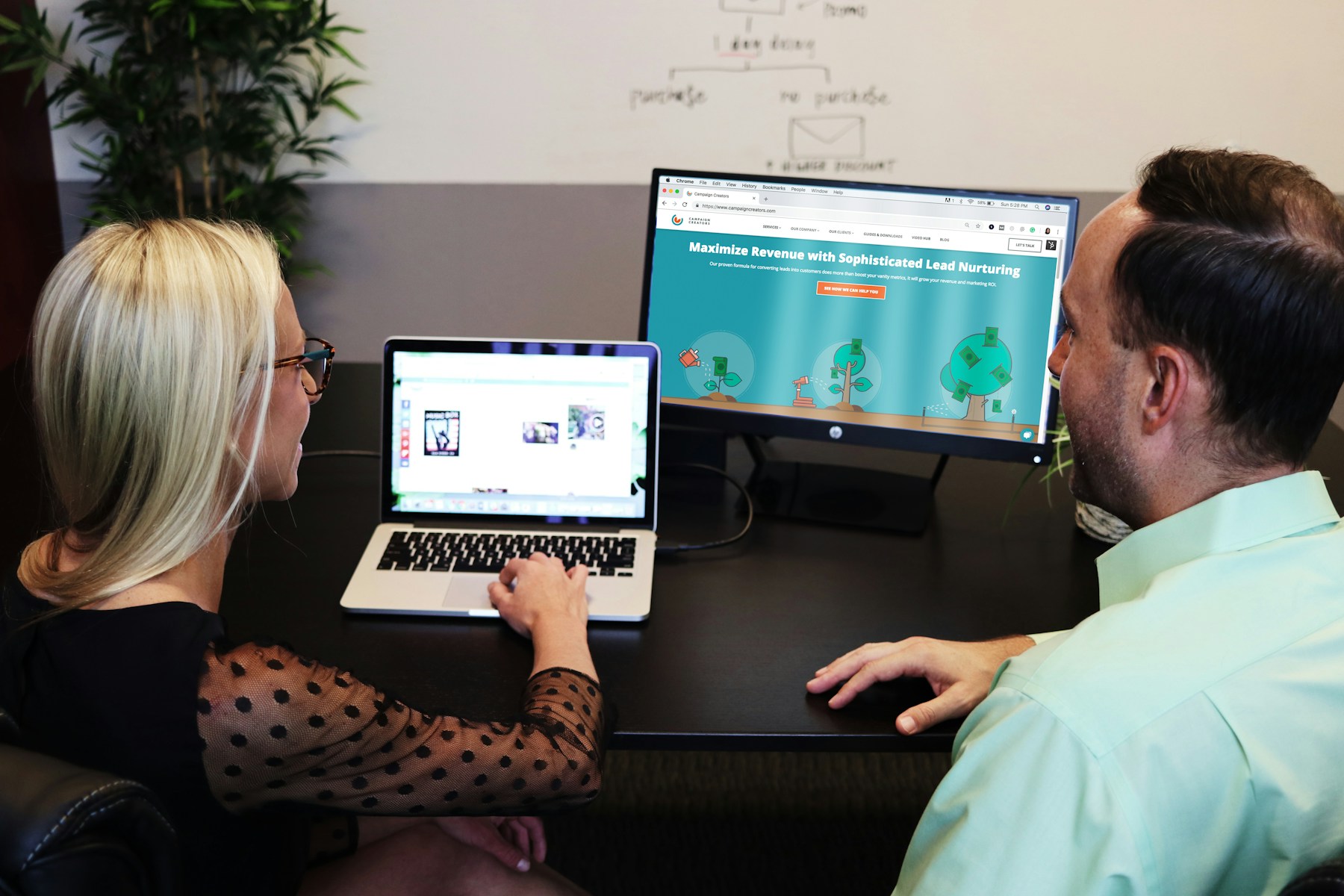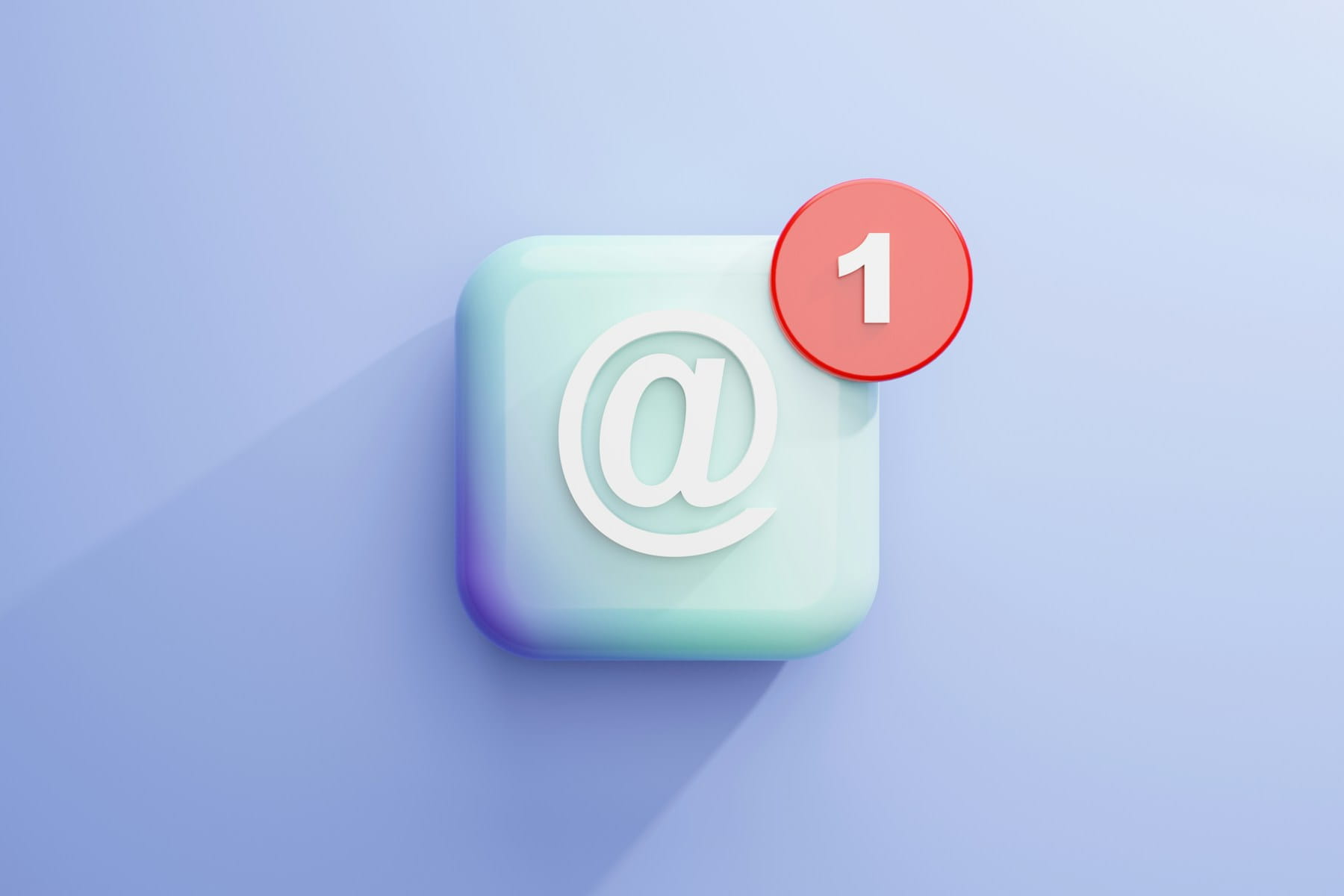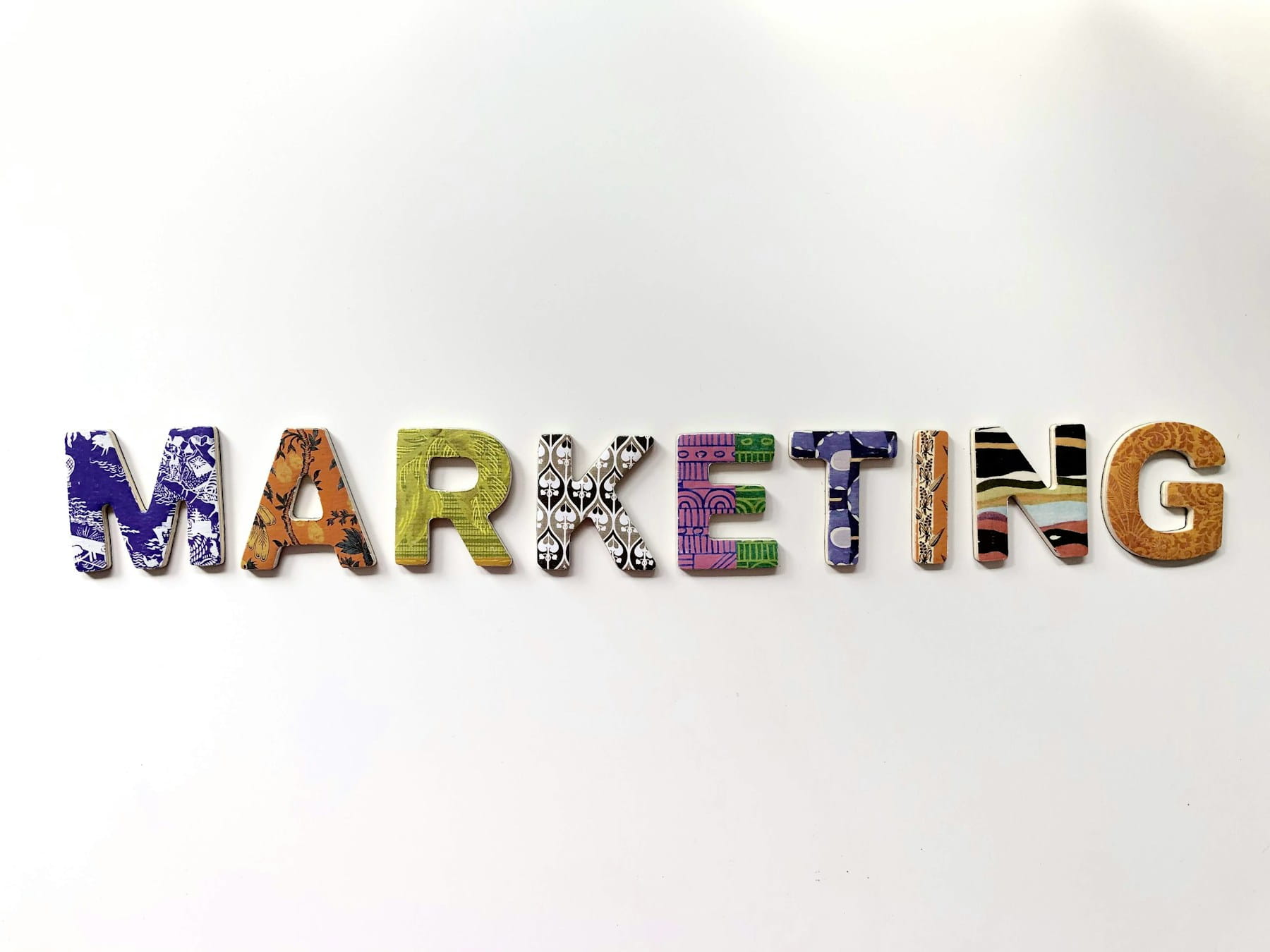Email marketing automation transforms how businesses communicate with customers by replacing manual, time-consuming email tasks with intelligent, automated sequences that deliver the right message to the right person at exactly the right time. This technology has become essential for modern marketing teams looking to scale their efforts without proportionally increasing their workload.
The power of email automation lies in its ability to create personalized customer experiences at scale. While a single marketer can only send a limited number of manual emails per day, automation enables that same person to nurture thousands of leads simultaneously, each receiving tailored content based on their unique behaviors, preferences, and stage in the customer journey.
This comprehensive guide explores everything you need to know about email marketing automation—from fundamental concepts and strategic planning to advanced techniques and platform selection. Whether you're just starting with automation or looking to optimize existing workflows, you'll find actionable insights to improve your email marketing performance.
Table of contents
- What is email marketing automation
- Benefits of automated email sequences
- Types of automated email campaigns
- Building your automation strategy
- Email automation workflow design
- Personalization and dynamic content
- Timing and trigger optimization
- Technical infrastructure requirements
- Performance measurement and analytics
- Common automation mistakes to avoid
- Advanced automation techniques
- Platform selection and infrastructure
What is email marketing automation
Email marketing automation refers to the use of software and technology to automatically send targeted emails to subscribers based on predefined triggers, schedules, or user behaviors. Rather than manually sending each email campaign, marketers create automated workflows that execute themselves when specific conditions are met.
At its core, email automation operates on an "if-then" logic system. If a subscriber takes a certain action (signs up for a newsletter, abandons a shopping cart, downloads a resource), then a specific email or series of emails is triggered automatically. This trigger-based approach ensures timely, relevant communication without requiring constant human intervention.
Modern email automation extends far beyond simple scheduled sends. Today's sophisticated systems can adapt to subscriber behavior in real-time, branching into different email paths based on engagement levels, purchase history, demographic information, and countless other data points. This creates truly personalized experiences that feel human despite being fully automated.
Core components of email automation
Triggers serve as the starting point for automated sequences. These can include time-based triggers (specific dates, anniversaries, or intervals), action-based triggers (form submissions, purchases, link clicks), or behavioral triggers (website visits, email opens, content downloads). The sophistication of your trigger options directly impacts the relevance and effectiveness of your automated campaigns.
Workflows define the logic and sequence of emails sent to subscribers. A workflow might be as simple as a single welcome email or as complex as a multi-branch decision tree that adapts based on dozens of variables. Well-designed workflows anticipate different subscriber paths and provide appropriate content for each scenario.
Conditions and branching add intelligence to automation workflows. Instead of sending every subscriber through the same linear sequence, conditions allow you to create different paths based on subscriber characteristics or behaviors. For example, a subscriber who clicks a pricing link might receive different follow-up emails than someone who downloads an educational resource.
Personalization variables enable dynamic content insertion that makes automated emails feel personal and relevant. These variables can include basic information like names and locations or sophisticated data points like past purchase behavior, browsing history, and engagement patterns.
How automation differs from manual campaigns
Manual email campaigns require marketers to actively create, schedule, and send each message. This approach works well for one-time announcements or time-sensitive promotions but becomes unsustainable when managing multiple customer touchpoints throughout complex customer journeys.
Automated sequences, by contrast, are set up once and then run continuously. A welcome series created today will automatically greet new subscribers months or years into the future without additional manual effort. This "build once, benefit forever" characteristic makes automation particularly valuable for recurring communication needs.
The relationship between broadcast emails and automation is complementary rather than competitive. For comprehensive guidance on both approaches, see our guides on how to send broadcast emails and email funnels. Broadcast campaigns excel at time-sensitive announcements to your entire list, while automation handles ongoing, behavior-based communication with individual subscribers.
Benefits of automated email sequences
Email marketing automation delivers substantial benefits across multiple dimensions of marketing performance. Understanding these advantages helps justify automation investments and guides strategic decision-making about where to apply automation most effectively.
Time and resource efficiency
The most immediate benefit of email automation is the dramatic reduction in time required to maintain consistent customer communication. Tasks that once required hours of manual work—segmenting lists, scheduling sends, personalizing content—now happen automatically in milliseconds.
This efficiency gain doesn't just save time; it enables small marketing teams to execute sophisticated campaigns previously only accessible to large enterprises with extensive staff. A single marketer can now manage complex, multi-touch nurture campaigns across different customer segments that would have required an entire team in the pre-automation era.
The compounding nature of automation efficiency becomes even more valuable over time. Each automated workflow built today continues delivering value indefinitely with minimal maintenance. As your automation library grows, you develop a powerful marketing engine that runs continuously with decreasing marginal effort.
Improved personalization and relevance
Automation technology enables personalization at a scale impossible with manual approaches. Rather than choosing between personalized one-to-one emails or impersonal mass broadcasts, automation allows genuinely personalized communication with thousands or millions of subscribers simultaneously.
This personalization extends beyond simple name insertion. Modern automation platforms can adapt entire email content, product recommendations, timing, and messaging based on individual subscriber characteristics and behaviors. For detailed strategies on implementing effective personalization, explore our guide on email segmentation.
The result is communication that feels personally relevant to each recipient, dramatically improving engagement rates and conversion performance. Subscribers receive content that matches their current needs and interests rather than generic messages designed for the broadest possible audience.
Consistent customer experience
Automation ensures every subscriber receives consistent, high-quality communication regardless of when they enter your funnel or which team member is working that day. This consistency builds trust and professional credibility that manual processes often struggle to maintain.
Consistency also means no subscriber falls through the cracks. In manual systems, busy periods or staff changes can lead to missed follow-ups or delayed responses. Automation guarantees every subscriber receives appropriate attention and timely communication throughout their customer journey.
Higher conversion rates and revenue
Automated sequences typically achieve significantly higher conversion rates than manual campaigns. The combination of perfect timing, personalized content, and consistent follow-up creates optimal conditions for conversion throughout the customer lifecycle.
The revenue impact extends beyond direct conversions. Automation enables businesses to nurture leads that might otherwise go cold, re-engage inactive customers who might otherwise churn, and maximize customer lifetime value through strategic upselling and cross-selling. For businesses sending transactional emails, integrating marketing automation with transactional email strategies creates additional touchpoints for customer engagement.
Better data and insights
Automated campaigns generate rich behavioral data that provides valuable insights into customer preferences and engagement patterns. This data becomes a strategic asset for optimizing not just email marketing but broader business strategies.
The systematic nature of automated workflows also makes testing and optimization more straightforward. Rather than comparing one-time manual campaigns sent under different conditions, you can test variations of automated sequences under controlled conditions to clearly identify performance drivers.
Types of automated email campaigns
Different types of automated campaigns serve specific purposes within overall marketing strategies. Understanding when and how to implement each type enables comprehensive automation coverage across the entire customer lifecycle.
Welcome series automation
Welcome series represent the foundation of email automation programs. These sequences introduce new subscribers to your brand immediately after signup, setting expectations for future communication while delivering initial value that reinforces their decision to subscribe.
Effective welcome series typically include 3-7 emails sent over the first week or two after subscription. The first email should arrive immediately (or within minutes) to capitalize on peak engagement when subscriber interest is highest. Subsequent emails gradually introduce your brand story, showcase key resources or products, and guide subscribers toward their first conversion.
The psychological impact of welcome emails makes them particularly valuable. Research consistently shows welcome emails achieve open rates 50-86% higher than standard promotional emails and generate significantly more revenue per message. This heightened engagement creates a critical window for establishing positive brand relationships.
Lead nurture sequences
Lead nurture automation guides prospects through the consideration process, gradually building trust and demonstrating value until they're ready to purchase. These sequences are particularly valuable for complex or high-consideration purchases where immediate conversion is unrealistic.
Nurture sequences typically span weeks or months, with emails spaced to match the natural consideration timeline for your products or services. Content focuses on education rather than hard selling, positioning your brand as a trusted advisor who understands prospect challenges and can provide solutions. For comprehensive strategies on building effective nurture campaigns, see our detailed guide on drip marketing.
Effective nurture automation includes multiple touchpoints addressing different aspects of the purchase decision. Early emails might focus on problem education, middle emails on solution exploration, and later emails on specific product features or comparisons. This gradual progression respects where prospects are in their journey while consistently moving them toward purchase readiness.
Onboarding automation
Customer onboarding sequences help new customers or users achieve early success with your product or service. These campaigns are critical for reducing churn, improving product adoption, and building long-term customer satisfaction.
Onboarding automation typically begins immediately after purchase or account creation, guiding users through initial setup, highlighting key features, and celebrating early milestones. The goal is reducing time-to-value—helping customers experience meaningful benefits as quickly as possible.
Sophisticated onboarding sequences adapt based on user behavior. Customers who quickly adopt core features might receive advanced tips and optimization strategies, while those struggling with basics receive additional support resources and encouragement. This adaptive approach ensures every customer receives appropriate guidance regardless of their technical expertise or learning speed.
Abandoned cart recovery
Abandoned cart automation targets shoppers who add items to their cart but leave without completing purchase. These sequences represent some of the highest-ROI automation available, typically recovering 5-15% of otherwise lost sales.
Effective cart abandonment sequences usually include 2-4 emails sent over 24-72 hours. The first email often sends within an hour as a gentle reminder, while subsequent messages might include reviews, urgency elements, or special incentives. The key is balancing persistence with respect—some cart abandonments represent considered decisions rather than simple forgetfulness.
Personalization significantly improves cart recovery performance. Including images and details of specific abandoned products creates relevance and reminds shoppers why they were interested initially. Some brands see up to 40% improvement in recovery rates from personalized versus generic abandonment emails.
Re-engagement campaigns
Re-engagement automation targets inactive subscribers who haven't opened or clicked emails recently. These campaigns attempt to rekindle interest before removing unengaged contacts, improving overall list health and sender reputation.
Re-engagement sequences typically include 2-3 emails sent over 2-4 weeks. The messaging often acknowledges the disconnect directly ("We've missed you" or "Still interested?") while highlighting value or changes the subscriber might have missed. Many successful re-engagement campaigns include preference centers allowing subscribers to adjust communication frequency or content focus.
The final email in re-engagement sequences should include a clear path to unsubscribe, explicitly stating this is the last message unless the subscriber takes action. This approach respects subscriber attention while maintaining list quality. Understanding how email spam filters work helps optimize deliverability for re-engagement campaigns, which often face higher filtering scrutiny.
Behavioral trigger campaigns
Behavioral automation responds to specific subscriber actions or behaviors in real-time. These highly targeted campaigns achieve exceptional relevance by addressing demonstrated interests or needs immediately after they're expressed.
Common behavioral triggers include specific page visits, content downloads, feature usage patterns, subscription renewals, or support interactions. The key to effective behavioral automation is identifying actions that signal clear intent or needs, then providing immediately relevant follow-up.
For example, a subscriber who visits your pricing page multiple times might receive case studies and ROI calculators, while someone who downloads a beginner's guide might enter an educational nurture sequence. This behavioral responsiveness creates experiences that feel personally tailored even when fully automated.
Building your automation strategy
Successful email automation requires strategic planning that aligns automated sequences with business objectives, customer needs, and available resources. Random automation without clear strategy often creates complex systems that deliver minimal value.
Defining automation objectives
Clear objectives provide direction for automation efforts and enable meaningful performance measurement. Different objectives require different automation approaches, so defining goals upfront prevents wasted effort on inappropriate implementations.
Revenue objectives focus automation on sequences that directly drive sales—cart abandonment, upsell campaigns, win-back sequences for churned customers. These campaigns prioritize conversion optimization and purchase facilitation over general engagement or education.
Engagement objectives use automation to maintain regular touchpoints and build ongoing relationships. Welcome series, nurture campaigns, and content distribution sequences serve these goals by keeping your brand top-of-mind without necessarily pushing immediate sales.
Efficiency objectives apply automation to reduce manual workload for routine communications. Transactional confirmations, onboarding sequences, and basic customer service responses automate necessary communication while freeing team resources for higher-value activities.
Customer journey mapping
Effective automation follows natural customer journey progression, delivering appropriate content and offers at each stage. Mapping these journeys before building automation ensures workflows align with actual customer needs and behaviors.
Begin by identifying key stages in your customer lifecycle—awareness, consideration, purchase, onboarding, retention, advocacy. Then document what information, support, or resources customers typically need at each stage. This mapping reveals automation opportunities where systematic communication can guide progression.
Journey maps should include both ideal paths and common detours or obstacles. Customers rarely follow perfectly linear progressions, so effective automation must accommodate different speeds, directions, and entry points. Building flexibility into workflow design prevents automation from feeling robotic or inappropriately rigid.
Prioritizing automation initiatives
Most businesses have more automation opportunities than resources to implement them simultaneously. Prioritization ensures you build highest-impact workflows first while maintaining quality and avoiding overwhelming complexity.
Quick wins offer high value relative to implementation effort. Welcome series typically fall into this category—they're relatively simple to build but deliver outsized engagement and conversion value. Starting with quick wins builds momentum and demonstrates automation value to stakeholders.
High-impact sequences address major business challenges or opportunities even if they require significant implementation effort. Cart abandonment automation for e-commerce businesses or trial conversion sequences for SaaS companies often justify substantial investment due to direct revenue impact.
Foundation building includes automation infrastructure that enables future workflows even if immediate ROI is unclear. Implementing proper data collection, building subscriber segmentation, or establishing personalization variables creates capabilities that make subsequent automation initiatives easier and more effective.
Email automation workflow design
Well-designed workflows form the backbone of effective email automation. Poor workflow design—even with great content—creates confusing experiences or misses opportunities, while excellent design elevates mediocre content into effective sequences.
Workflow structure and logic
Automation workflows consist of triggers, conditions, actions, and delays organized into coherent sequences. Understanding how these elements work together enables creation of sophisticated workflows that handle complex scenarios appropriately.
Linear workflows send every subscriber through the same sequence of emails with predetermined intervals. These simple structures work well for scenarios where all subscribers have similar needs—welcome series, basic onboarding, or standard nurture campaigns.
Branching workflows create different paths based on subscriber characteristics or behaviors. Conditional logic routes subscribers to appropriate content based on their actions, creating personalized experiences within single workflows rather than requiring separate sequences for each scenario.
Looping workflows repeat certain steps or return subscribers to earlier stages based on specific conditions. These structures work well for re-engagement or for ensuring subscribers complete key actions before progressing to subsequent stages.
Trigger design and implementation
Trigger selection determines when and why subscribers enter automation workflows. Well-chosen triggers ensure subscribers receive relevant content at optimal moments, while poor triggers create irrelevant or poorly-timed communication.
Entry triggers determine who enters workflows and when. These might include form submissions, tag assignments, purchase events, or specific dates. The specificity of entry triggers affects both workflow relevance and the number of subscribers who enter.
Exit triggers define conditions that remove subscribers from workflows before completion. A subscriber who purchases might exit a product consideration sequence, or someone who achieves a success milestone might graduate from onboarding. Clear exit criteria prevent subscribers from receiving irrelevant emails after situations change.
Delay triggers determine timing between workflow steps. These can be simple time intervals (3 days after previous email) or sophisticated conditions (wait until subscriber opens email or 5 days pass, whichever comes first). Strategic delay design balances maintaining engagement momentum with allowing time for content consumption and action.
Email content sequencing
The order and progression of emails within workflows significantly impacts campaign effectiveness. Strategic sequencing builds on previous messages while maintaining engagement and guiding subscribers toward desired outcomes.
Value-first sequencing front-loads workflows with helpful, educational content before introducing promotional messages. This approach builds trust and establishes credibility that makes subscribers more receptive to later commercial content.
Progressive disclosure reveals information gradually, matching the natural learning and decision-making process. Early emails cover broad concepts and benefits, while later messages drill into specific features, pricing, or implementation details.
Momentum building strategically increases engagement requirements throughout sequences. Initial emails might only ask subscribers to read content, while later messages encourage deeper commitment like attending webinars, downloading trials, or scheduling consultations.
Decision points and branching
Decision points create workflow branches based on subscriber actions or characteristics, enabling personalized experiences that adapt to individual needs and behaviors.
Engagement-based branching creates different paths for subscribers who do or don't engage with emails. Engaged subscribers might receive more frequent communication or advanced content, while unengaged contacts get simplified messages or re-engagement attempts.
Behavioral branching routes subscribers based on specific actions like link clicks, page visits, or purchase behaviors. Someone who clicks pricing information follows a different path than someone who downloads educational resources, ensuring subsequent content matches demonstrated interests.
Demographic or firmographic branching adapts workflows based on subscriber characteristics like industry, company size, or geographic location. This enables relevant examples, case studies, and offers that resonate with specific subscriber segments.
Personalization and dynamic content
Email personalization has evolved far beyond inserting subscriber names into subject lines. Modern automation platforms enable sophisticated dynamic content that adapts entire email experiences to individual subscriber characteristics and behaviors.
Levels of personalization
Personalization exists on a spectrum from basic to advanced. Understanding different personalization levels helps you implement appropriate complexity for your business needs and technical capabilities.
Basic personalization includes subscriber name, location, and other simple profile data inserted into otherwise standard content. While basic, this level still improves engagement compared to completely generic messages and requires minimal technical sophistication.
Behavioral personalization adapts content based on subscriber actions—past purchases, browsing history, email engagement patterns, or content downloads. This mid-level personalization creates significantly more relevant experiences by reflecting demonstrated interests and needs.
Predictive personalization uses machine learning to anticipate subscriber needs and preferences based on patterns across your entire customer base. This advanced approach can recommend products, predict optimal send times, or identify churn risk before obvious warning signs appear.
Dynamic content implementation
Dynamic content allows single email templates to display different content blocks, images, or calls-to-action to different subscribers based on personalization rules. This approach scales personalization while simplifying email production and testing.
Content blocks are email sections that swap based on subscriber segments. A single newsletter template might show different product features to different industries, or different resources based on subscriber lifecycle stage. This maintains email structure consistency while personalizing actual content.
Product recommendations dynamically insert relevant products or services based on browsing behavior, purchase history, or customer similarity. E-commerce businesses often see 10-30% revenue increases from personalized product recommendations versus generic featured items.
Contextual adaptation modifies content based on external factors like geography, season, weather, or current events. Location-based personalization might show different store locations or regional offers, while seasonal adaptation highlights relevant products or promotions.
Segmentation strategies
Effective personalization requires thoughtful subscriber segmentation that groups people by meaningful characteristics or behaviors. Different segmentation approaches enable different personalization opportunities. For comprehensive guidance on all aspects of segmentation, explore our detailed email segmentation guide.
Demographic segmentation groups subscribers by characteristics like age, location, job title, or company size. This basic segmentation enables industry-specific examples, role-appropriate messaging, or geographically relevant offers.
Lifecycle segmentation categorizes subscribers based on their relationship stage with your brand—new subscribers, active customers, at-risk accounts, or churned users. Each stage requires different communication focused on appropriate next steps.
Engagement segmentation separates highly engaged subscribers from inactive ones, enabling different communication strategies for each group. Active subscribers might receive more frequent emails or exclusive content, while inactive segments get re-engagement campaigns or reduced frequency.
Timing and trigger optimization
When emails send is often as important as what they say. Strategic timing optimization ensures subscribers receive messages when they're most likely to engage, while trigger refinement ensures automation activates under ideal conditions.
Send time optimization
Optimal email timing varies based on audience characteristics, industry, and email purpose. Systematic testing and analysis reveal timing patterns specific to your subscriber base.
Best practice starting points suggest weekday mornings typically achieve higher open rates for B2B audiences, while evenings and weekends sometimes perform better for B2C. However, these generalizations often don't hold for specific audiences, making testing essential.
Behavioral send time optimization uses individual subscriber engagement patterns to predict optimal delivery times for each person. Machine learning algorithms can analyze when each subscriber typically opens emails and schedule sends accordingly, potentially improving open rates by 10-20%.
Time zone considerations become critical for geographically distributed audiences. Sending at 10 AM in your timezone means subscribers in other regions receive emails at potentially suboptimal times. Time zone-adjusted sending ensures everyone receives emails at appropriate local times.
Trigger timing and frequency
Automation triggers should fire when subscriber interest or need is highest while avoiding overwhelming frequency that causes disengagement.
Immediate triggers fire instantly after subscriber actions, capitalizing on peak engagement and interest. Cart abandonment sequences, post-purchase confirmations, and download delivery should happen within minutes to feel responsive and helpful.
Delayed triggers wait strategic intervals before firing, allowing time for consideration or action before follow-up. A subscriber who downloads a resource might receive follow-up content 3-5 days later, providing time to consume initial material before receiving more.
Frequency caps prevent subscribers from receiving excessive emails when they trigger multiple workflows simultaneously. Setting maximum emails per day or week maintains positive subscriber relationships even when automation activity spikes.
Workflow pacing
The intervals between emails within workflows significantly impact completion rates and engagement. Too aggressive pacing overwhelms subscribers, while too slow timing loses momentum and relevance.
Welcome series pacing typically uses shorter intervals (1-2 days) during the first week when subscriber interest peaks, potentially extending to longer intervals for subsequent emails. This accelerated early pacing capitalizes on initial engagement while the subscriber remembers why they signed up.
Nurture campaign pacing often spaces emails 3-7 days apart, providing time for content consumption and consideration while maintaining regular touchpoints. Longer sales cycles might extend to weekly or bi-weekly intervals to match natural decision-making timelines.
Adaptive pacing adjusts intervals based on subscriber engagement. Highly engaged subscribers might receive emails more frequently, while those showing lower engagement get extended intervals or simplified sequences to reduce potential fatigue.
Technical infrastructure requirements
Effective email automation depends on robust technical infrastructure that can handle sophisticated workflows, maintain deliverability, and integrate with other business systems.
Email service provider requirements
Automation platforms vary significantly in capabilities, pricing, and complexity. Understanding infrastructure requirements helps identify platforms that can support your automation ambitions both today and as they scale.
Workflow builder sophistication determines what automation you can create. Look for visual workflow editors with conditional logic, branching capabilities, and wait steps. More advanced platforms offer webhook integration, custom events, and API access for unlimited flexibility. For guidance on choosing the right platform, see our comprehensive guide on best email marketing platforms.
Deliverability infrastructure ensures automated emails reach inboxes rather than spam folders. Established platforms typically have better sender reputations, ISP relationships, and deliverability monitoring than newer or smaller providers. For understanding technical requirements, review our guide on DNS email records that support strong deliverability.
Integration capabilities determine how well your email platform connects with CRM systems, e-commerce platforms, analytics tools, and other business software. Robust APIs, pre-built connectors, and webhook support facilitate data synchronization critical for sophisticated automation.
Scalability and performance affect how workflows perform under load. Platforms should handle thousands of simultaneous triggers and sends without delays or failures. Testing platform performance under realistic conditions prevents discovering limitations after committing to a solution.
Data management and synchronization
Automation effectiveness depends on clean, accurate, well-organized subscriber data synchronized across all relevant systems.
Customer data platforms centralize subscriber information from multiple sources, creating single customer views that enable comprehensive personalization. Without centralized data, automation platforms might lack critical information needed for relevant personalization.
Real-time synchronization ensures automation workflows always have current subscriber data. Delays between system updates can cause automation to fire based on outdated information, creating irrelevant or confusing experiences.
Data quality processes maintain accuracy through validation, deduplication, and enrichment. Poor data quality undermines personalization effectiveness regardless of automation sophistication, making data hygiene essential for automation success.
Compliance and privacy infrastructure
Email automation must comply with various regulations protecting consumer privacy and controlling commercial communication.
Consent management tracks and enforces subscriber permissions for different communication types. Automation systems need capabilities to respect opt-outs, manage preference centers, and document consent for regulatory compliance.
Data protection ensures subscriber information remains secure and is handled according to applicable regulations like GDPR, CCPA, or industry-specific requirements. Automation platforms should provide encryption, access controls, and data retention policies that meet compliance needs.
Unsubscribe handling must work flawlessly in automated workflows. Subscribers who unsubscribe should immediately stop receiving automated emails, not just future manual campaigns. Testing unsubscribe processing across all workflows prevents compliance violations and subscriber frustration.
Performance measurement and analytics
Comprehensive measurement and analysis enable continuous automation improvement while demonstrating business value. Without proper analytics, optimization becomes guesswork rather than data-driven improvement.
Key performance indicators
Different metrics reveal different aspects of automation performance. Understanding what each measurement indicates helps focus improvement efforts effectively.
Delivery metrics track whether emails successfully reach subscriber inboxes. Bounce rates, spam complaints, and inbox placement rates reveal deliverability health that determines whether other metrics even matter.
Engagement metrics measure subscriber interaction with automated emails. Open rates indicate subject line and sender effectiveness, while click-through rates reveal content relevance and call-to-action strength. Time-to-open and read duration provide additional engagement insights.
Conversion metrics connect automation to business outcomes. Tracking which workflows drive purchases, signups, downloads, or other desired actions demonstrates automation ROI and identifies highest-performing sequences.
Retention metrics measure how workflows impact customer lifecycle value. Monitoring churn rates, repeat purchase rates, and customer lifetime value changes reveals automation's broader business impact beyond immediate conversions.
Workflow-specific analytics
Analyzing performance at the workflow level reveals optimization opportunities invisible in aggregated metrics.
Completion rates show what percentage of subscribers finish workflows versus exiting early. Low completion rates might indicate workflow length issues, irrelevant content, or poorly timed intervals that lose subscriber interest.
Step performance examines individual emails within workflows. Identifying which emails achieve strong engagement and which underperform guides content optimization efforts. Significant drop-offs after specific emails often indicate content problems or excessive asks.
Branch comparison for workflows with conditional logic reveals which paths perform best. If subscribers who open emails convert significantly better than those who don't, you might create re-engagement branches to recover non-openers before they exit workflows.
Testing and optimization frameworks
Systematic testing enables continuous workflow improvement based on data rather than assumptions.
A/B testing compares workflow variations to identify optimal approaches. Test subject lines, content variations, sending times, or entire workflow structures to understand what drives performance for your specific audience.
Multivariate testing examines multiple variables simultaneously, revealing interaction effects between different elements. This more sophisticated approach requires larger sample sizes but provides deeper optimization insights.
Sequential testing implements changes incrementally, measuring impact before proceeding to next optimizations. This controlled approach clearly attributes performance changes to specific modifications rather than accumulating changes that make attribution unclear.
Common automation mistakes to avoid
Understanding frequent automation pitfalls helps prevent costly errors that undermine performance or damage subscriber relationships.
Over-automation problems
Excessive automation can create impersonal experiences that feel robotic rather than helpful. Balance efficiency with maintaining human connection and genuine value delivery.
Removing all human touch makes communication feel mechanical. While automation handles routine communication efficiently, strategic human outreach for high-value customers or key moments maintains relationship quality that pure automation struggles to achieve.
Automating inappropriate communications can damage relationships. Highly sensitive situations like complaints, difficult questions, or complex customer situations typically require human judgment that automation can't replicate.
Creating automation complexity beyond organizational capability to maintain leads to broken workflows, outdated content, and abandoned optimization. Start simple and expand gradually rather than building elaborate systems your team can't sustain.
Content and messaging errors
Poor content quality undermines even perfectly executed automation technology. Focus on subscriber value rather than just automation mechanics.
Generic automated content that obviously applies to everyone lacks the relevance that makes automation valuable. If automated emails feel like mail merges rather than personalized communication, you're missing automation's primary benefit.
Selling too aggressively in automated sequences damages relationship building. While conversion is the ultimate goal, relentless promotional pressure in every automated email creates subscriber fatigue and increases unsubscribes.
Inconsistent messaging between automated and manual communications confuses subscribers. Ensure automated emails align with overall brand voice, promises made in other channels, and current campaigns or promotions.
Technical implementation issues
Technical problems can derail otherwise effective automation strategies through poor execution.
Broken automation workflows occur when triggers fail, conditions malfunction, or integrations break. Regular testing and monitoring catch these issues before they impact significant subscriber numbers.
Poor mobile optimization creates frustrating experiences for subscribers reading emails on phones or tablets. Since mobile email opens often exceed desktop, mobile-unfriendly automation undermines performance significantly.
Deliverability neglect allows sender reputation to degrade, landing automated emails in spam folders regardless of content quality. Maintaining list hygiene, monitoring engagement, and following deliverability best practices keeps automated emails reaching inboxes.
Advanced automation techniques
Sophisticated automation strategies leverage cutting-edge capabilities to create truly exceptional experiences that drive superior results.
Behavioral scoring and progression
Subscriber scoring systems quantify engagement and purchase readiness, enabling automation that adapts to individual positions in the buyer journey.
Lead scoring assigns points for various behaviors—email opens, link clicks, page visits, content downloads. As scores increase, automation can shift subscribers from educational content to more sales-focused messaging or alert sales teams when leads reach qualification thresholds.
Engagement scoring tracks overall interaction levels to identify highly engaged versus at-risk subscribers. Automation can adapt communication frequency, content complexity, or channel mix based on engagement scores.
Decay mechanisms reduce scores over time without continued engagement, ensuring scoring reflects current interest rather than ancient history. This prevents subscribers who were once highly engaged but are now inactive from receiving inappropriate communication.
Multi-channel automation orchestration
Advanced automation extends beyond email to coordinate experiences across multiple channels, creating seamless omnichannel journeys.
Email and SMS coordination combines channels' strengths—email for detailed content, SMS for time-sensitive alerts. Automation can send detailed information via email while using SMS for appointment reminders or urgent offers.
Social media integration allows email automation to trigger based on social engagement or can promote social content through automated email sequences. This cross-channel approach increases total touchpoints while maintaining message consistency.
Direct mail integration combines digital automation efficiency with physical mail's high-impact nature for VIP customers or key moments. Automation can trigger personalized direct mail based on digital behaviors or milestones.
Predictive automation
Machine learning enables automation that anticipates subscriber needs and behaviors before they're explicitly demonstrated.
Churn prediction identifies customers likely to cancel or disengage before obvious warning signs appear. Automated retention campaigns can intervene proactively rather than reacting after customers have already decided to leave.
Purchase prediction forecasts when customers are likely to make repeat purchases based on historical patterns. Automated reminders or offers can arrive just as natural repurchase timing approaches.
Content optimization uses algorithms to predict which content, subject lines, or calls-to-action will resonate best with individual subscribers. This automated testing and optimization happens continuously without manual intervention.
Platform selection and infrastructure
Choosing the right email automation platform and infrastructure significantly impacts both immediate capabilities and long-term success potential.
Evaluation criteria for automation platforms
Automation capabilities vary dramatically between platforms. Entry-level tools might only support basic autoresponders, while sophisticated platforms offer visual workflow builders with unlimited branching, conditional logic, and custom event triggering. Match platform capabilities to your automation ambitions.
Ease of use affects how quickly your team can build and optimize workflows. Intuitive visual builders enable faster workflow creation and easier troubleshooting than complex code-based systems, though technical teams might prefer advanced customization options.
Pricing models impact total cost of ownership as your automation scales. Per-contact pricing becomes expensive for large lists, while per-email pricing penalizes frequent communication. Usage-based pricing offers flexibility but can create unpredictable costs.
Support quality becomes critical when troubleshooting complex automation issues. Responsive technical support with automation expertise can prevent small problems from becoming major campaign disruptions.
Self-hosted versus cloud solutions
Infrastructure decisions affect control, cost, and technical requirements for email automation.
Cloud platforms offer convenience and minimal technical overhead but create vendor dependence and potentially escalating costs. Traditional SaaS solutions work well for teams without technical resources or those wanting to focus entirely on strategy rather than infrastructure.
Self-hosted solutions provide maximum control and cost efficiency for technical teams willing to manage infrastructure. These approaches work particularly well for businesses with existing technical infrastructure and desire to avoid vendor lock-in.
Hybrid approaches combine cloud convenience with infrastructure control, allowing businesses to use managed services while maintaining ownership of sending infrastructure and customer data. This balanced approach often provides the best combination of flexibility and simplicity.
MailDiver for email automation
For businesses seeking flexible, cost-effective email automation infrastructure, MailDiver offers comprehensive capabilities without the vendor lock-in and escalating costs common with traditional platforms.
MailDiver's automation features include sophisticated workflow builders, behavioral triggers, and comprehensive analytics. The platform supports both simple autoresponders and complex multi-branch workflows that adapt to individual subscriber behaviors and characteristics.
Flexible deployment options allow you to choose between self-hosted deployment, managed cloud services, or connecting your own AWS SES account. This flexibility enables businesses to optimize costs while maintaining control over their email infrastructure.
Template editors ranging from intuitive Notion-like interfaces to code editors provide automation email creation tools suitable for any skill level. Smart personalization with automatic fallbacks ensures emails look professional even when subscriber data is incomplete.
Automatic domain warm-up protects sender reputation when launching automated sequences or scaling sending volumes. MailDiver handles the technical complexity of gradual volume increases, helping automated emails reach inboxes rather than spam folders.
Whether you're building your first welcome series or orchestrating sophisticated multi-channel automation across thousands of subscribers, MailDiver provides the reliability, flexibility, and cost efficiency needed for successful email marketing automation.
Email marketing automation has transformed from optional advanced technique to essential marketing capability. The businesses that master automation—combining strategic workflow design with compelling content and robust technical infrastructure—gain significant competitive advantages through personalized communication at scale.
Success with email automation requires balancing automation efficiency with genuine value delivery. The technology enables sophisticated communication impossible with manual approaches, but that capability must serve subscriber needs rather than just organizational efficiency. The most effective automation feels helpful and personal despite being fully automated.
Start your automation journey with clear objectives and simple workflows, expanding gradually as you develop capabilities and demonstrate value. Each automated sequence you build creates ongoing leverage, freeing resources for additional automation or higher-value strategic work.
Ready to build powerful automated email sequences? Try MailDiver today and discover how flexible email automation infrastructure can transform your marketing effectiveness while optimizing costs. Whether you're sending your first welcome series or orchestrating complex multi-touch campaigns, MailDiver provides the foundation for automation success.






